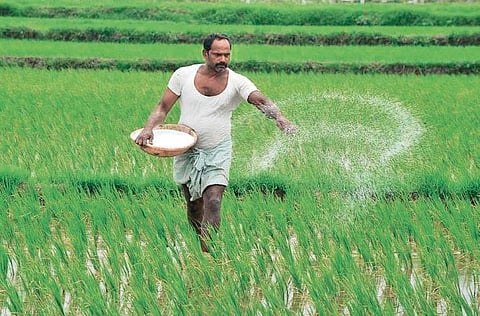

ROURKELA: As delayed monsoon in the rain-fed Sundargarh district affected cultivation on about 4,500 hectares (ha) of rice fallow land in the ongoing Kharif crop season, the affected farmers have started opting for oil seeds and pulses in the pre-rabi season to compensate for the loss. The pre-rabi crop season starts in October in which the affected farmers have been advised to cultivate pulses and oilseeds utilising the existing soil moisture.
Sources said the district in June and July had received 153.86 mm and 117.2 mm deficit rainfall respectively as agriculture operations for paddy farming including transplantation and inter-cultural operation were held up on vast areas giving rise to fear of crop loss. However, the monsoon got revived from second week of August and the month received 133.79 mm excess rainfall with the district’s average rainfall standing at 527.69 mm to help complete pending operations. Still about 4,500 ha of rice fallow areas across the district could not be covered.
Sundargarh chief district agriculture officer (CDAO) Birendra Behera said affected farmers have been advised to go for pre-rabi cultivation of horse gram, lentils, biri, moong, til and nizer among other crops as the existing soil moisture condition is most suitable for these crops.
“These crops are more resilient and capable of surviving with soil moisture. At many places pre-rabi sowing on the rice fallow areas has started and the areas are likely to be complete in October itself as farmers would be able to harvest in December to make up for the crop season loss of kharif,” he said. With better planning and preparations, the farmers could avail another harvest with pulses and oilseeds cultivation between January and April before going for normal paddy farming in the next kharif season, Behera added.
Incidentally, of 2.04 ha programmed for paddy cultivation in the ongoing kharif crop season, about 1,99,500 ha could be covered till August end. Of 1.09 lakh programmed for non-paddy crops in the kharif season the target has been achieved. Agriculture officials said both the standing paddy and non-paddy crops are in good condition.